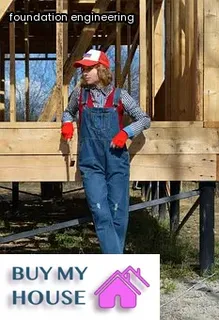House leveling can be an incredibly beneficial endeavor for homeowners who have foundations that are settling unevenly. Not only does it help to bring a home back to its original level, but it can also provide improved stability and sturdiness, helping to prevent further problems in the future.
It can also help to improve the overall look of a home by evening out any noticeable dips and humps that may have formed throughout the years. Additionally, it often helps to increase the value of a house as buyers are more likely to choose one that is structurally sound and level.
As an added bonus, many times when this type of work is done, it allows for other necessary repairs or improvements to be made in conjunction with leveling that could not be done before due to drainage or other issues caused by unleveled foundations. All in all, house leveling can be a great decision for homeowners looking to make their homes more stable and aesthetically pleasing.

Foundation repair and house leveling are two distinct processes with different purposes. Foundation repair is used to address structural damage caused by settling, cracking, or shifting of the foundation.
It involves underpinning, which is the process of reinforcing and stabilizing the foundation so it can support the weight of the home. House leveling, on the other hand, is used to level out sloping floors or walls due to a foundation that has settled unevenly.
This process typically requires jacking up and supporting the home in order to make any necessary adjustments then replacing supports as needed. Both processes can be expensive but are necessary for maintaining a structurally sound home.
Depending on your specific needs, you may need both services or just one; however it is important to understand the differences between them before taking any action.
The cost of house foundation leveling projects can vary widely, depending on the scope of the project and the materials needed. Many homeowners opt for a simple solution such as shimming joists or adding additional piers to stabilize the foundation, which can be much more affordable than a full renovation.
However, in some cases, a full replacement may be necessary to ensure long-term stability. Homeowners should research different options and compare prices before making any decisions, as some contractors may charge significantly higher rates than others.
Additionally, it is important to note that there are often permits and inspections required by local governments when undertaking large structural changes which could add to the overall cost of the project and should be taken into account when budgeting.

When it comes to addressing the settling issues of a house foundation, there are several options available to homeowners. Understanding which house leveling method is best suited for solving your particular problem is key.
Some approaches focus on utilizing jacks and shims while others may require a more extensive solution such as hydraulic or helical piers. It is important to be aware of the advantages and disadvantages associated with each option before making a decision on which one to use.
For example, jacking and shimming can be completed relatively quickly but does not address the underlying issue causing the settling. On the other hand, pier systems are designed to permanently stabilize and lift a structure but are more expensive and labor intensive.
The right house leveling method will depend upon individual circumstances and budget considerations. Ultimately, it is important to seek out professional advice from an experienced contractor who can provide you with an assessment of your situation and recommend a suitable solution.
Your home is a big investment, so it's important to make sure the foundation of your house remains stable for years to come. Unfortunately, settling foundations are a common issue and can cause damage to your property if left untreated.
Knowing common signs of foundation issues is the first step in addressing any potential problems. If you notice any of these red flags, it might be time to consider house leveling: cracking walls or ceilings, uneven floors, doors or windows that don't close properly, gaps between walls and crown molding, or slanted chimneys.
If you suspect your home needs attention due to a settling foundation, contact a certified house leveling specialist right away. Taking action quickly can help ensure the safety of your family and save you money on costly repairs down the road.

When it comes to house foundation leveling, there are a variety of different types of foundations that can be used. The most common type is a concrete slab foundation, which is poured directly onto the ground and is the most cost-effective option when compared to other foundations.
Another type is a pier and beam foundation, which consists of wooden beams supported by piers and is the best choice for areas with expansive soils or areas with high water tables. Lastly, there is a crawl space foundation, which involves laying down joists and then building up from them with block walls or piers.
All three types have their pros and cons, but they all provide solid support for your home's foundation. It's important to consider factors like soil type, drainage issues, and overall budget when deciding which type of foundation will work best for your home.
With the right information and advice from an experienced professional, you can make sure your house has the proper foundation level for its longevity.
House foundation leveling is a highly important process for any homeowner to understand, especially if they are dealing with settling foundation problems. Slab on grade foundations are the most common type of foundation used in residential construction and involves pouring a concrete slab directly onto the ground which then serves as the base for the structure.
This requires that groundwork be done beforehand to level out and prepare the area for the slab in order to ensure it is even and secure once complete. During this process, it is also essential to make sure that drainage systems, such as gutters, are properly put in place to prevent any water from pooling beneath or around the house.
Additionally, soil compaction is necessary in order for the foundation to remain stable over time. To properly compact soil, you must use heavy machinery such as a vibratory plate compactor or roller compactor and should also take extra care if working on an incline due to potential dangers associated with doing so.
Understanding these processes is critical when it comes to house foundation leveling and can mean the difference between a structurally sound home and one that needs frequent repairs.

Crawlspace foundations are a common type of foundation used in homes, and they can have a major impact on house leveling. The crawlspace is usually built with either a concrete slab or with block walls that support wooden joists which, in turn, support the flooring.
Because crawlspaces are typically shallow and prone to settling, they can cause the house to become unleveled over time. If you notice your house is starting to settle unevenly, it’s important to take action as soon as possible in order to prevent further damage.
It’s also important to understand the type of foundation that you have so you can find the right solution for your settling issues. There are several methods available for fixing an unleveled house caused by a failed crawlspace foundation such as adding additional support beams or jacking up the foundation and re-leveling it.
With the help of an experienced contractor and this ultimate guide on house foundation leveling, you can solve your settling problems quickly and effectively.
When it comes to house foundation leveling, professional advice is essential to ensure the job is done correctly. If done incorrectly, you could end up with further damage that could be costly to repair.
It’s important to understand your options and the potential benefits of each option before proceeding. To help you make the best decision, a professional contractor can provide an assessment of your home’s foundation condition and identify which type of house leveling will best suit your needs.
They can also evaluate the cost of different methods and advise on any additional repairs that may be required in order to prevent future issues from occurring. With their expertise, you can rest assured that any project related to house foundation leveling will be completed effectively and efficiently for long-term results.

Concrete slab leveling is an effective and relatively easy method to level a settling foundation. However, there are pros and cons associated with this type of foundation repair.
One of the main advantages to using concrete slab leveling is the cost-effectiveness of the process. In most cases, the entire procedure can be completed in one or two days without requiring heavy equipment or extensive labor.
Additionally, concrete slab leveling creates minimal disturbance to surrounding areas due to its shallow depth. On the other hand, there are some potential drawbacks associated with this method.
It may not be able to address more serious foundation problems like large cracks or shifting walls. Furthermore, if it is not done correctly by a professional contractor, it could even cause further damage to your foundation over time.
Ultimately, when deciding on the best way to fix your settling foundation, it is important to weigh both the pros and cons of concrete slab leveling before making a decision.
Pre-level inspections are an essential part of any house leveling process and should not be overlooked. Before beginning a foundation leveling project, it is important to inspect the area for any potential problems or risks that may cause disruption during the leveling process.
During this inspection, a professional contractor will check the foundation’s overall condition and look for signs of settling, shifting, or cracking in the structure. If any issues are noticed, corrective measures can be taken before beginning the leveling process.
This inspection can also help identify areas that may require extra care or attention when completing the project. Pre-level inspections are incredibly important for ensuring that all necessary steps have been taken to ensure a successful house foundation leveling project.

For homeowners dealing with settling foundation problems, the cost and benefit of DIY vs professional services for house leveling can be daunting. Knowing which option to choose is essential in order to ensure a lasting solution for foundation problems.
If you opt for DIY methods, there are several options available, including concrete piers, helical piers, mudjacking and chemical grouting. However, these solutions may require heavy digging and manual labor that could take longer than anticipated or become more expensive than originally thought.
On the other hand, hiring a professional contractor can provide the expertise needed to ensure proper installation and reduce the risk of further damage. Although hiring a professional service may come at an additional cost upfront, it could save time and money in the long run by avoiding costly repairs down the road.
Ultimately, weighing the costs and benefits of DIY vs professional services is key when deciding which approach is best for your particular situation when it comes to house foundation leveling.
Piers and beams are a popular solution for effectively leveling a house foundation that is settling. This process involves installing posts underneath the foundation and then attaching beams to those posts to support the structure.
It can be used for both concrete and wooden foundations, as long as there is enough room underneath the foundation to install the posts. Piers and beams can provide long-term stability and help correct any problems caused by soil shifts or other settling issues.
The installation process usually takes around two days, depending on the complexity of your project, and should be completed by a professional contractor with experience in foundation repair. Once installed, piers and beams can help significantly reduce the risk of future settling or structural damage due to shifting ground or other environmental factors.
Fixing an uneven house foundation can be a tricky process, but it is essential for the stability of your home. A settling foundation can occur due to poor soil conditions, age, or even natural disasters like earthquakes.
While it is important to hire professionals to assess the severity of the problem and address any underlying issues, there are some steps you can take on your own to help level out an uneven house foundation. Start by removing dirt from around the perimeter of your foundation.
This will make it easier to identify which parts of the foundation have sunk and need leveling. After that, use a spirit level or laser level to measure the height difference between different parts of the foundation and create a plan for how you will raise them up again.
You may need special equipment like hydraulic jacks or steel beams depending on how large the displacement is. Finally, fill in any gaps with concrete and allow it time to set before repeating these steps until you have achieved optimum levelling.
With patience and dedication, you’ll be able to level out your house foundation and enjoy peace of mind knowing that your home is secure once more.

If your home is built on a slab foundation, you may experience settling issues that can cause problems with the structure of your house. The good news is that foundation leveling is a relatively straightforward procedure that can help solve your settling foundation problems.
This ultimate guide to house foundation leveling will provide all the information you need to know about how to level a house on a slab foundation. Firstly, it’s important to identify any signs of settling such as cracks in walls or floors, doors and windows that stick, or sloping floors.
If these signs are present, then you may need to invest in professional foundation leveling services. This process involves pumping an expansive grout beneath the basis of the home in order to create an even surface and re-level any sections that have settled.
In addition to this, waterproofing and drainage improvements can also be implemented as part of this service which will help prevent further settlement problems in the future. So if you're looking for a solution for your settling foundation problems, this guide has got you covered – understanding how to level a house on a slab foundation is easy once you know what steps are involved.
No, a foundation should not be perfectly level. A house foundation is considered structurally sound when it is within 4 inches of level.
This means that slight variations in the leveling of a foundation are acceptable. However, if these variations exceed 4 inches, then settling problems may arise and need to be addressed promptly.
The Ultimate Guide To House Foundation Leveling: How To Solve Your Settling Foundation Problems can help you understand the signs of settling foundations and how to resolve them. With this guide, you can learn how to properly assess your foundation's level and determine what steps are needed to correct any issues before they become more severe.